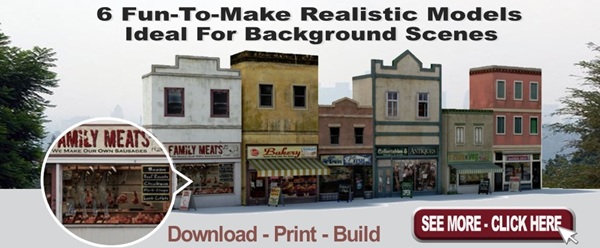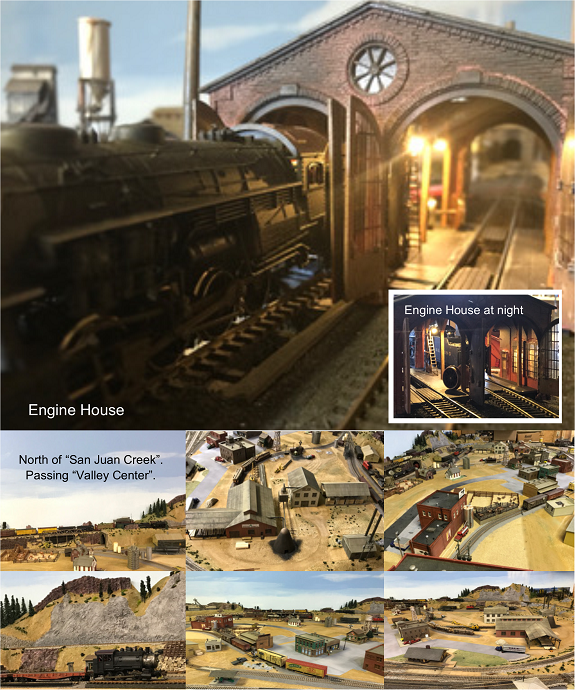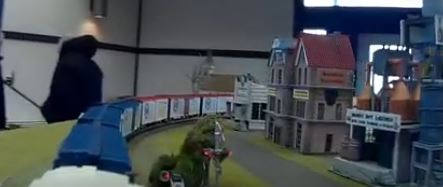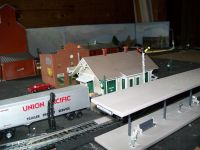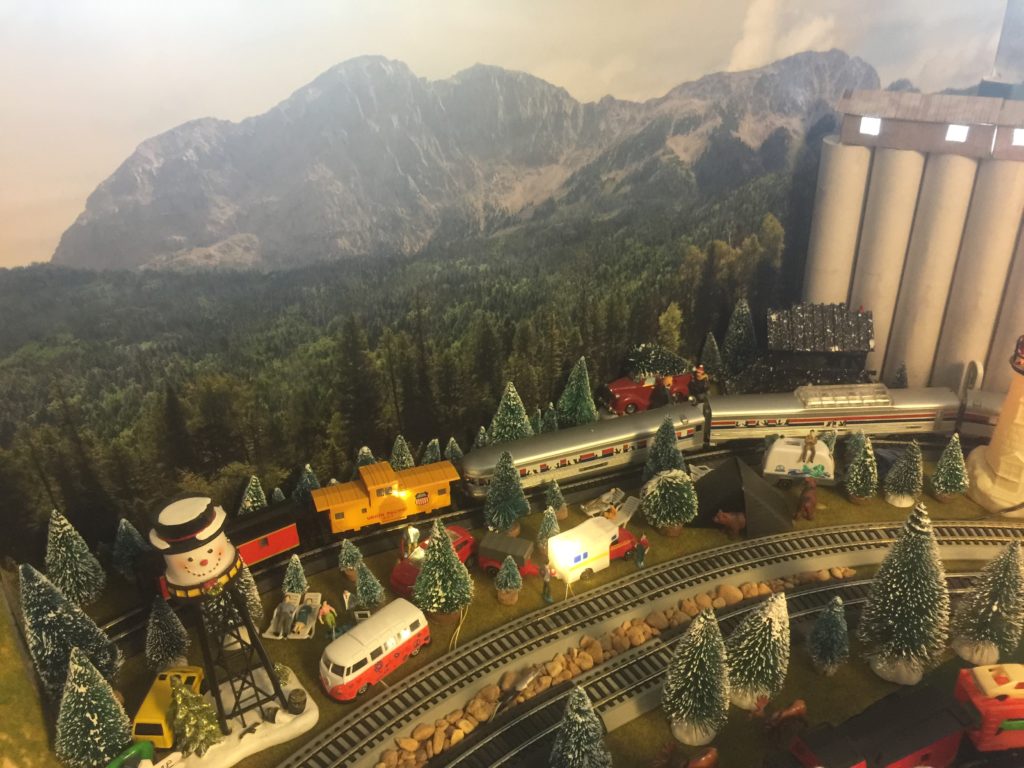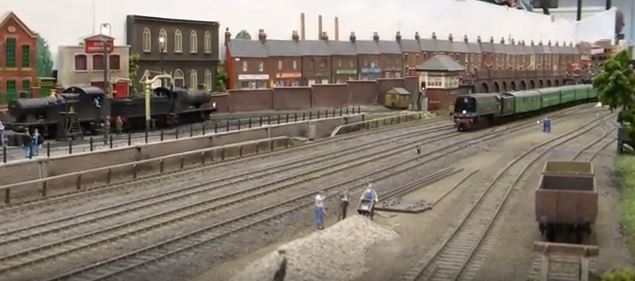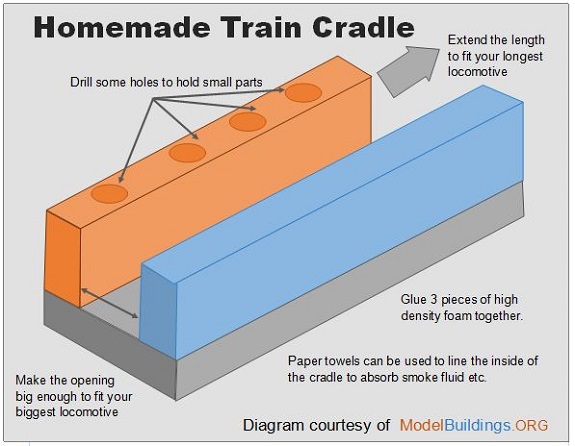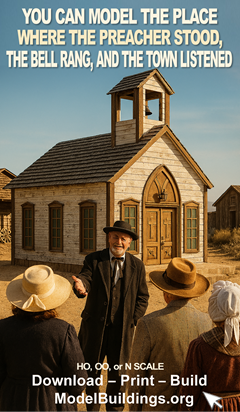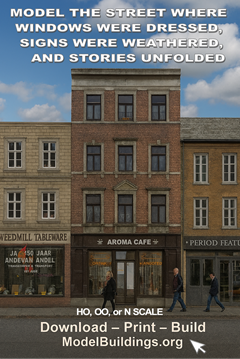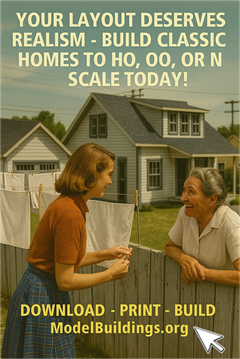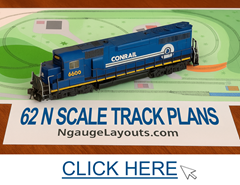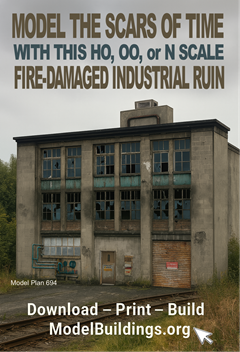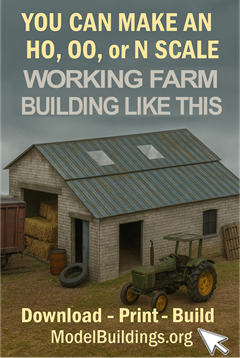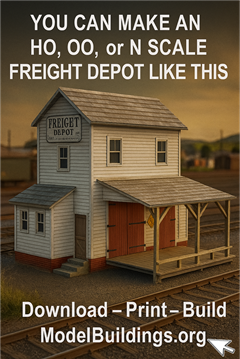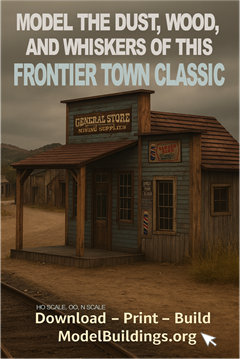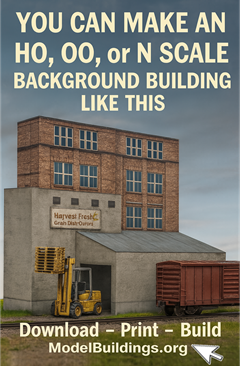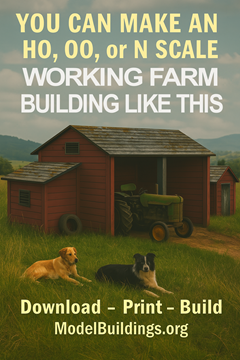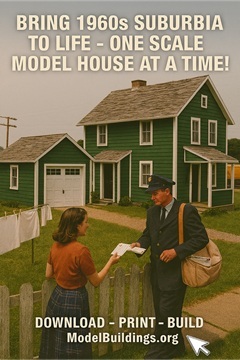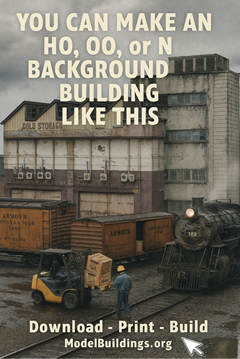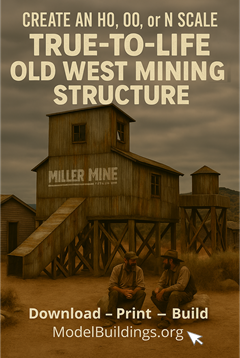Everything on model trains, model railroads, model railways, locomotives, model train layouts, scenery, wiring, DCC and more. Enjoy the world's best hobby... model railroading!
Is N Gauge Suitable for 76 Year Old Restricted to 6ft x 3ft Space?
Howard K asked:
“In my last home I had a big space for a layout and got about a quarter way through constructing a 12ft x 5ft HO layout. Unfortunately I got health issues and so we moved to a warmer climate and because I hadn’t spent much on trains etc I sold everything. That was 5 years ago. Now my health is much improved, but at 76 I don’t want to start a big new project, and don’t have the space. Maybe enough space for a 6ft x 3ft layout at a push. With the smaller space I have been thinking about maybe going N gauge instead, but wonder if it might be too fiddly for my shaky old hands and not so sharp eyes? Has anyone of my age got N gauge? What’s the general view on which way I should go. I do want an interest and want to get back into the hobby. Advice please.”
Add your comments to assist Howard, or use the ASK A QUESTION link to submit your own question for publication.
Joe Shares Photos of His San Juan Creek 12ft x 8ft Layout
Joe Graffi has kindly sent in some photos of his layout to share, and writes:
“I model in HO and these are some recent shots of the 12’x8’ layout. The time is late steam, prior to 1950 in the area of N.W. New Mexico & S.W. CO. Most of the landscaping is from photos I took along the Cumbres & Toltec. The town is San Juan Creek and is supported by: San Juan Lumber Co. and San Juan Coal, as well as Talones Packing Co. (cattle) and Ochs Oil Distribution). The local railroad is “San Juan & Central”. The “Santa Fe” passes through and has a station at Grants N.M.”
The bottom left photo shows a 0-6-0 with a consist of empty flats just past the planning mill. Joe makes all of his own decals.
Install a 5 Pole Motor
Rudy asks readers:
“ I have a much loved Fleischman, 4065 class 65018 steam engine. Is it possible to install a 5 pole motor into this engine? It’s still almost new, but I’ve noticed a big difference between it’s 3 pole, and the 5 pole motor in my other engine, since I like running “dead slow”… Is such a motor even available since it seems to be vertical in design?”
Add your comment or suggestion to help Rudy below.
South Hills Model Railroad Club Modular HO Layout – Scott Township – Pittsburgh
Richard shares this info – “Our model railroad club (South Hills Model Railroad Club) in Pittsburgh does 4 events a year displaying our modular layout. This scene is from onboard a train at the March 2019 show.”
Charles Shares A Photo of His 8ft x 4ft Loop
“Hi all; I have been reading this Blog for a couple of years and have used several of the comments and suggestions towards my work. I have a 4’X8′ HO loop with a couple of turnouts. I also do Pizza Box N scale and T-Track. It’s not much but between the clubs I belong to and sites like this I have to say I’ve made a real Mess!” Charles Treft
Hendrik Shares A Scene From His 11ft x 5ft HO Layout
A small scene at one end of my HO setup (11×5 Ft). It shows the Bear Mountain Camp ground with bears chasing two people on the top of a camper and coming out of a tent. They are surrounded by other campers relaxing on loungers and keeping social distancing. Four main tracks cut through the forest and trees with mountain background and storage silo. I have two steam engine trains (passenger and freight train), a Diesel engine freight train and an Acela electric passenger train that keep me busy, staying at home. Stay safe and healthy.
Shane Shares Photo From The Great Electric Train Show
Shane from Buckinghamshire in the UK writes:
“Hi Robert, a great suggestion from you to send in photos and ideas to share at a time when we all need perking up. Here’s a photo I took at The Great Electric Train Show. It’s a scene I really liked and hope it heartens fellow modellers from around the world.”
Inspire Others With A Photo Of Your Layout, or Share a Clever Tip On This Blog
Most of the world is stuck indoors, but we in the model railroading community share a wonderful common interest in the world’s greatest indoor hobby. I have friends that usually fill in their days gardening, or playing golf or tennis, and apart from perhaps watching TV or reading a book, have no indoor hobbies to keep them busy. They are doing it particularly tough, as are those who have been personally touched by the sad loss of a love one or friend.
Although it would be great to instantly return to life as normal, at the moment we all just need to hunker down and make the best of a bad situation. I know model railroading could be seen by many as a form of escapism, but we all need to stay strong, healthy and sane as we stay safe whilst hoping and praying for the return of better times. Keep busy and hopefully the days will pass by quicker and with a little less boredom and worry.
 Helping others is also a great way to stay in touch and keep positive. That’s why I would welcome any articles, tips, layout photos you can share on this community blog. Send in your suggestions and tips by using one of the many ‘Ask a Question’ links on this page. If you have a photo to share (only one per person please), let us know in the same way and we will let you know how to email it to us for publication. Share a photo and a few words about your favorite locomotive, or a piece of scenery you are working on or completed, or a building you are constructing. I’m sure others would like to see what you are up to.
Helping others is also a great way to stay in touch and keep positive. That’s why I would welcome any articles, tips, layout photos you can share on this community blog. Send in your suggestions and tips by using one of the many ‘Ask a Question’ links on this page. If you have a photo to share (only one per person please), let us know in the same way and we will let you know how to email it to us for publication. Share a photo and a few words about your favorite locomotive, or a piece of scenery you are working on or completed, or a building you are constructing. I’m sure others would like to see what you are up to.
Point Rails Not Fitting With Stock Rails
Ewan has a problem he is hoping others can help him with:
“I have had some Atlas Code 83 turnouts sitting under my workbench for ages waiting to be installed – you know, it’s one of those things I’ll get around to doing when I have time. Well, now like it seems millions of others around the world with this dreadful virus thing, I have the time to put these Code 83 to good use. Problem is; after a closer look I’m not sure if they are any good.
My concern is with how well the point rails will fit properly into the stock rails. The end tips of the point rails are sticking out of the stock rails by quite a bit. I am wondering if I should file the tip of the point rail to keep it flush with the stock rail. I can probably do this on one side on one turnout, but I am not sure I can do this on the other side because the other point rail is sticking out by quite a lot and I don’t think filing the tip will be enough. In fact there were two problems. The point rail is not fitting into the gap in the stock rail, and the tip of the point rail looks a bit twisted. Does that make sense?
I am worried if I try to straighten it then it might snap off completely. The joint where the actual tab joins the throw bar is really thin. I know if it breaks I could possibly solder the tab back onto the point rail but that is only a maybe. Am I encountering a unique problem or is this more of a wider design fault in the type of turnout?
I would like to hear from anyone else who might have had similar experiences with Atlas Code 83 turnouts, or even with other brands. I am trying to stay positive and keep busy in these troubled times, so don’t want to get all negative and just slang off at Atlas. Having this problem is not good, but at least it is keeping my mind busy right now rather than worrying about bigger problems around the country and world.
Positive thoughts and solutions from others would be very much appreciated right now, and thank you in advance Robert for allowing me to ask this question on your blog. Stay safe to you, your family and friends – and the same goes to everyone else in the model RR community around the world. We need to support each other right now.”
If you have a question you would like to have published for free, simply use the ASK A QUESTION link to submit it for consideration.
Ballasting Tip from Mike
Mike writes:
“This is not really a question but a great tip. I stumbled on a video showing a very fast, easy ballasting technique. Ballast mixed with DAP WELDWOOD PLASTIC RESIN GLUE. It is a dry glue mixed with the ballast at a 2 part ballast 1 part glue. Once you have the ballast where you want it, mist it, not spray, use a mister commonly found at Optometrists or in the pharmacy dept. A spray bottle, puts too much water out, mister is great but you still need to keep you distance. WET WATER is used in the mister, I use a drop of dish liquid and about 4 oz of water. Wipe your tracks and come back tomorrow!! The same concept works on ground foam as well.”
Turning Insulfrog Turnouts to Live for DCC
Duncan asks:
“Can anyone give me info about turning N gauge insulfrog turnouts to live for DCC? Also, were to buy the staple type converters from?”
Model Railways In South Africa
Peter Field from Pietermaritzburg, the capital and second-largest city in the province of KwaZulu-Natal, South Africa sent in this article and these photos to share with readers and hopefully inspire others to get involved in the wonderful hobby of model railroading. He even has a KIWI RAIL locomotive from New Zealand in his collection. Thank you Peter for sharing.
Peter writes –
 In 2009 I wrote on the article that was published on your blog on my Love Affair with trains and model railways.
In 2009 I wrote on the article that was published on your blog on my Love Affair with trains and model railways.
I built a demo layout for shows , however this turned into a more permanent layout, the layout was extended to its present size of 1.8m x1.2m then extended it and extended it yet to its present size of 5.5mx1.5m in 2018. This gives me +-14m of open trackage plus the shunting yards and run to the loco sheds. The layout is based on the South African railways in the 1960’s to 2018 or there about. Steam diesel and electric motive power operate on the board together as the layout is based on a small rural town near Pietermaritzburg in Natal.
I operate a fleet of 4 steam locomotives Class 16E the grey hound of the railways for its speed Class 15CA and classes 8-15. On the diesel side I have Class31,35,34,36 he electrics Class5E,6E, and the mighty Class 4E which was the largest Elec locomotive built for the SAR by England in the 1960’s. The layout is a single track with dual track in the station as a holding track. The layout consists of a small rural village, shops, houses farms factories and a station. The factories are a small furniture factory, Cat facility, and the container deposit with a fuel deposit.
The operation of the board is that I make up the freight or goods trains in the yards and bring them into the station to be hauled. The passenger stock consists of three types one vintage wooden balcony coaches of the 1950 – 1960’s and then the 1970’s steel bodied coaches of the old SAR and lastly the Trans Karoo train which is todays train which operate long distance Johannesburg – Cape Town – JHB – Durban etc. Which are shunted in the tards and made up and taken to the station to be hauled. If I am using a 1950’s – 1960’s Wooden stock, then the motive power would be steam or early Class 31 Diesels. Steel body coaches Class 5E-ClassE motive power and if the trans Karoo (which means barren Land) then Class 34 Diesel is used or Class 7E.
How do I operate the trains if I use a Goods train then it is made up and hauled by either Diesel or Elec motive power some times by steam the train is operated for +-0 15-20 minutes brought into the station and uncoupled and loco returned to the sheds and the Class 36 shunter brings the train to the shunting yards where it is shunted into the various sidings or side lines next to the factories. The speed depends on the load and quantity of wagons being hauled +- 80kph. The Passenger trains also start from the station and are hauled by Class 34-35 or Class 6E or 7E. I operate the passenger’s trains for 15 – 20 minutes with stops every so often to represent stations, when completed the locomotive goes back to the sheds. The class 36 locomotive is a shunter and stays into the yard but ventures to the main station every so often to collect or deliver coaches or wagons to be hauled., so I can hold one train whilst the other is in operation on the passing loop. The Hilton station has two lines one is the main line and the other is the passing loop to hold trains whilst the other is operating on the main line.
Another fact is that the Hilton station was built in the 1880’a as the main line from the coast to the hinter land was being built. It is a wooden and corrugated iron building which is still in operation today as a coffee e shop and has a large Model Railway museum housing some three large layouts. Which is on my layout today.
I have a piece of history that someone gave me some years ago. Some may recall that in the 1918 WW1 the peace treaty was signed in the dining salon 2419D in France by Germany and France. At the start of WW2 Hitler signed WW2 into operation in the same car at the same place in France and duly hijacked the dining salon which was part of the Wagon de Lits train Orient Express. This was used as his mobile war room during WW 2 and after the war was put in tunnel and burnt to ashes, however a sister to 2419D, was located in a museum in France after the war and duly named 2419D and is now a museum. There is never a dull moment as modellers know always something to do on the layout be it track work, scenery, erecting buildings painting and wiring etc.
Lastly, I have a visitor on my SAR system a Kiwi rail Diesel which is identical to the Class34 SAR. Many thanks for the wonderful news each month and the suggestions on model railroading in general.
Construction a Drop Leaf Access For Middle of Layout
Mike models HO and asks the following question. Readers are welcome to post diagrams, or photos in the COMMENTS under Mike’s post:
“What is the best way to build a drop leaf for access to middle of layout? We will be running 2 tracks across about 2 foot span.”
141 R1288 Lima Tender Stockist?
David L wants to locate a stockist for an HO steam train model 141 R1288 Lima tender. He asks: “Can somebody can help me to find it? Thanks a lot.”
Making A Cheap and Easy To Use Train Cradle
Bob has HO trains and posed this question:
“What are modelers using for train cradles to protect cars and locomotives from damage while working on them?”
There are many possible solutions. Here is one home-made design made from 1 inch thick high density foam. It could easily be adapted to individual needs. You could cut a variety of different sized foam inserts to simply put between the train and the sides to make the engine fit nice and snugly. You could angle cut edges of the foam if you find that easiest. Add your comments, and suggestions on what you use, or how to improve on the design shown below.
NCE Power Cab Problem
Jason models HO and his question is:
“Hello all, I have been of the armchair variety for many years due to funds, usable space, life etc. Over the years I have collected a few locos and finally have the space to build and as of now I have only straight track installed (no turnouts with the possibility of shorts), one DCC factory installed loco and a few older RTR units. When I first hooked up the system and programmed the one loco, things were great, somewhere along the line of installing decoders in the others, it seems the top speed is no where near what it was when I only had the one running.
Additionally, the initial start up response has decreased on the factory unit. The only CV’s I changed were on the older units that I had to install the decoders hardwire. It also seems step 18 or 19 is full (after power loss) and the remaining speed steps up to 28 are unresponsive. Momentum is at 0, all units CV 5 maxed at 255, CV 6 127, CV2 varies a little from one to the other, initial loco unchanged and everything has been triple checked.
All locos run perfectly just slower and this is with only one on the track at a time so I’m not pulling too much juice. Additionally, I noticed that with the loco (any) completely shut off the amp meter still reads .01 to .03 fluctuating, not sure if this is normal or may be a symptom of a failed or partially failing system? Hoping some of you experts can help a tech dinosaur!”
Is Kato Track Weatherproof?
David asks:
“Just wondering. Is N gauge Kato set track weather proof. And, if not, why? Thanks?”
